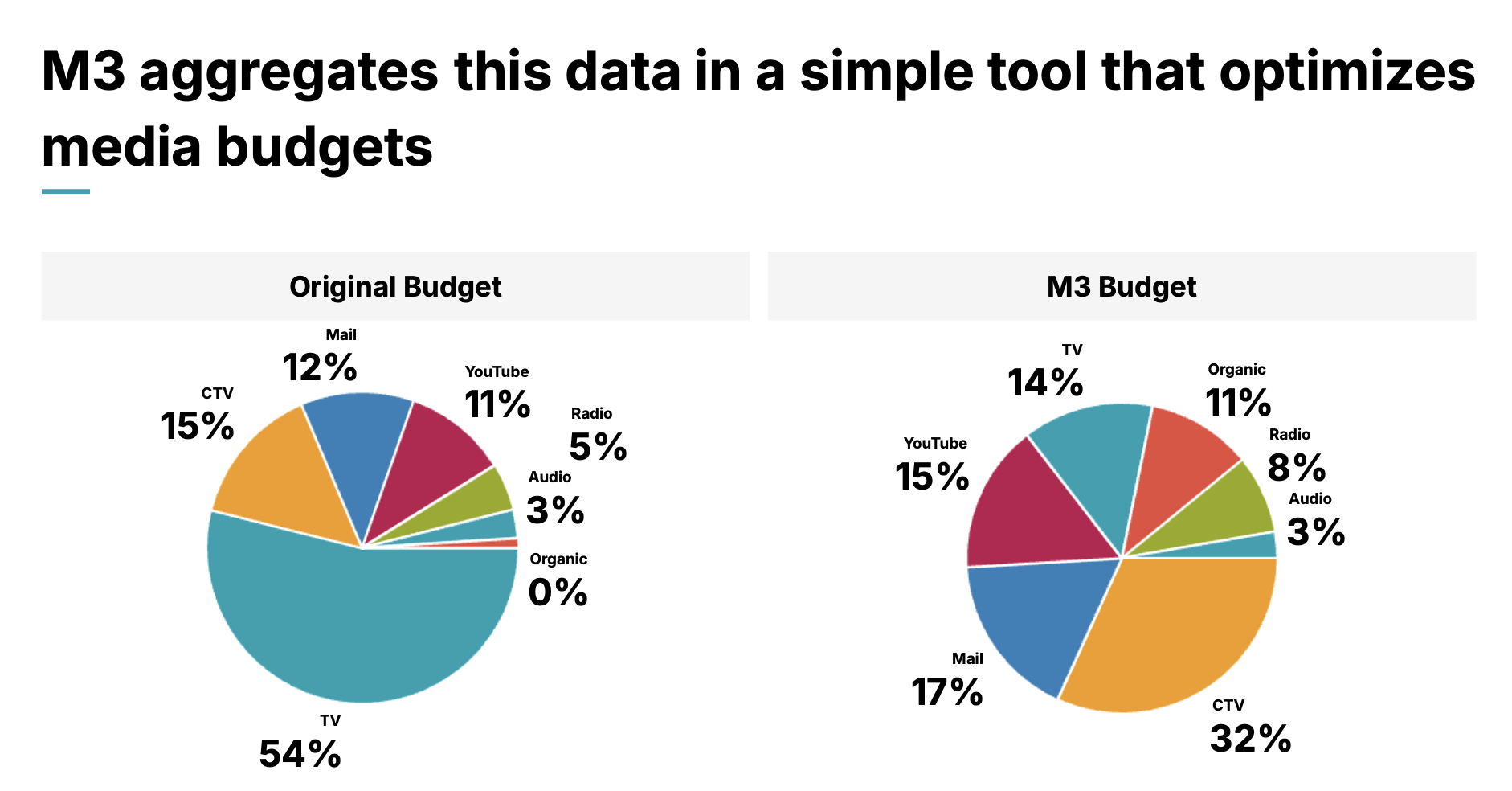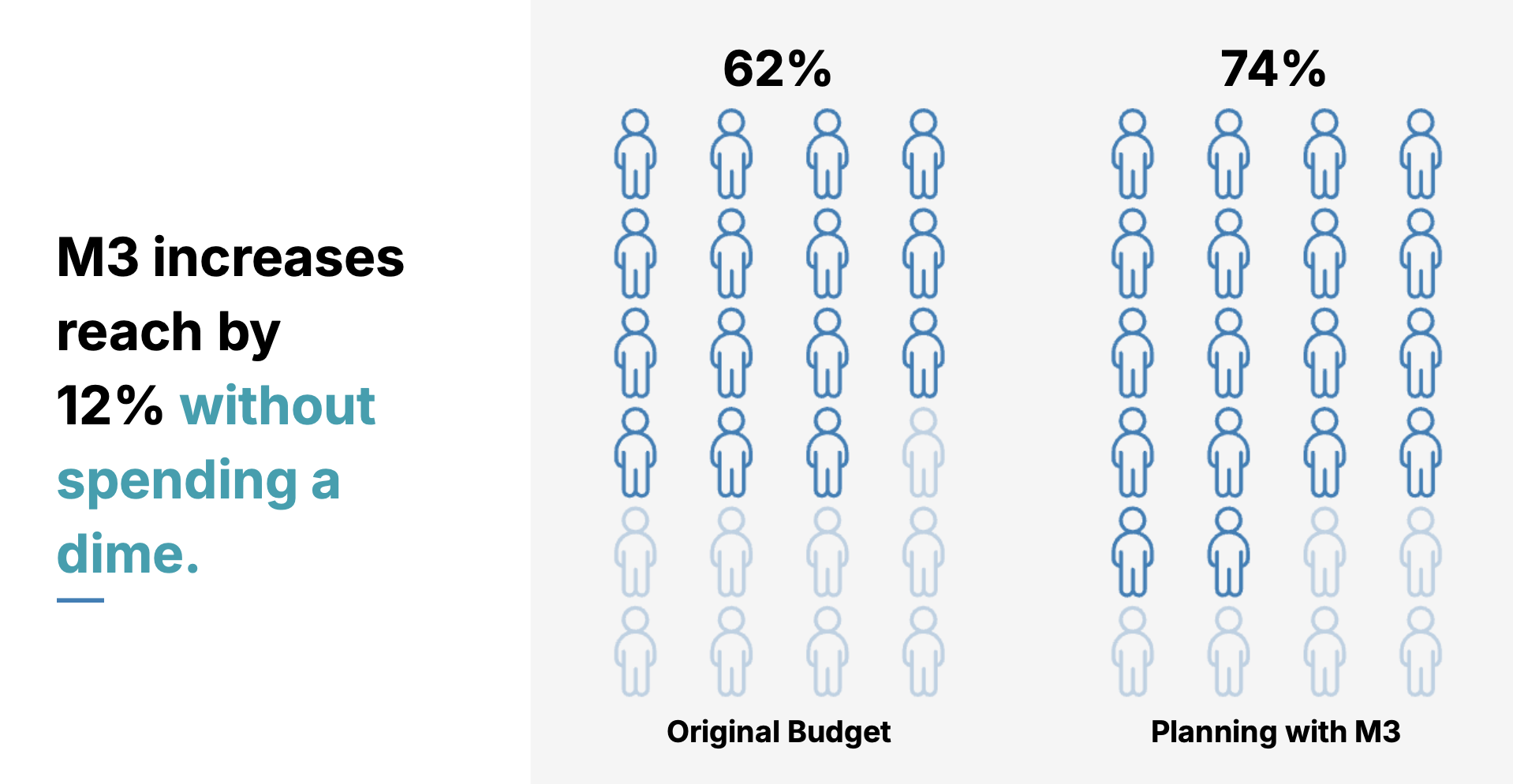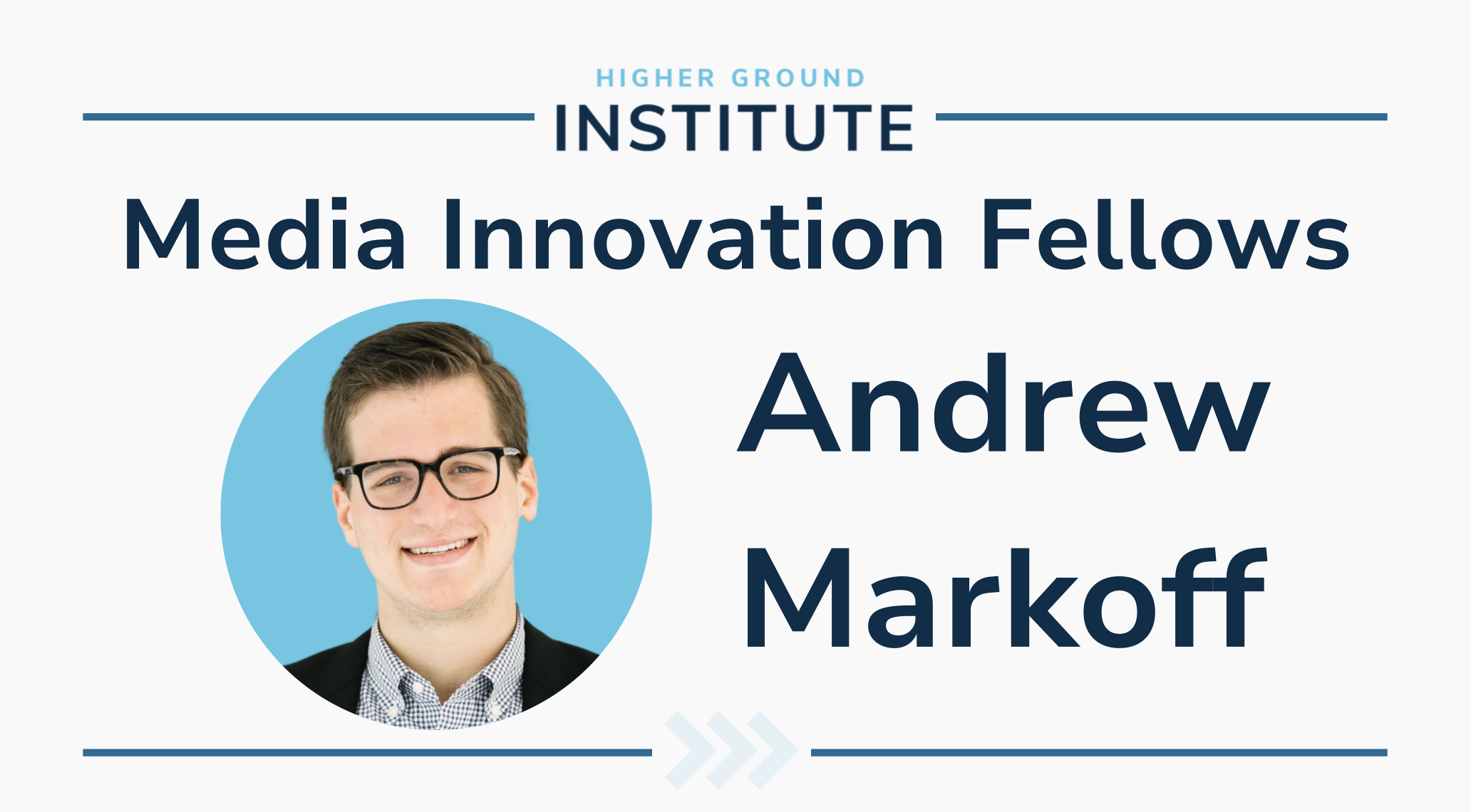As part of our 2025 Higher Ground Institute Media Innovation Fellowship spotlight series, we’re featuring six visionary leaders who are reshaping the future of progressive digital media. These Fellows are building tools, frameworks, and strategies that challenge conventional campaign thinking and expand what’s possible in political engagement.
Today we’re featuring Andrew Markoff—a veteran campaign manager and strategist who built the analytics engine behind the Harris campaigns’ historic paid media operation. His experience spans the full spectrum of electoral politics, from state legislatures to presidential races, and at every level he has confronted the same high-stakes question: how do campaigns spend their media budgets effectively?
With his HGI project, M3 Media, Andrew is developing a first-of-its-kind media planning platform designed to help campaigns of all sizes make smarter, data-driven spending decisions. By combining voter media consumption data with advertising cost and performance benchmarks, M3 Media equips campaign leaders to make informed, strategic trade-offs—across channels and across budgets.
We spoke with Andrew about his journey from campaign war rooms to the HGI Fellowship, the media myths he’s ready to challenge, and his vision for a smarter, more strategic future in progressive media planning.

HGI: What inspired you to apply for the HGI Media Innovation fellowship?
Andrew: I’ve managed many campaigns over the years. After you raise money, develop a platform, prepare for debates, and gather endorsements, there’s one huge question every campaign team faces: how do we spend all our money? The conventional wisdom is we should spend a lot of it on advertising, and I believe that is true. But as a campaign manager I had no clue how to choose between a piece of mail or a larger TV buy. There’s very little data available to make those choices.
On the Harris for President campaign, we built a prototype media planning platform that combined consumption data on American voters with data from various advertising platforms, and used it to make informed decisions on media buying. In many ways, this mirrors commercial advertisers who use sophisticated media mix models to decide which spending strategy will sell the highest volume of product. M3 Media does that for winning votes.
I applied for the HGI Media Innovation fellowship because I believe campaigns and causes of all sizes—not just a Presidential race—should be able to make data-driven decisions about how to spend their resources. After all, campaigns have two primary resources: time and money!
HGI: How does your project address the gaps in digital engagement or communications for progressive campaigns?
Andrew: In our space, there are always discussions about whether we are spending enough money on digital media. A lot of these debates result in one-size-fits-all proclamations about what works and what does not. But there is existing, high-quality data that tells us what American voters are consuming, how expensive it is to get our content onto those platforms, and what sort of impact we can have by doing so. And while there are countless smart media strategists in our space who use this data in different ways, there is no solution that pulls it all together for a decision-maker who needs to set a media budget. Those decision makers deserve access to this information, so they can see for themselves whether we are over- or under-invested in digital communications in the specific election they need to win.

HGI: What will the space look like if/when your project has succeeded?
Andrew: We created a prototype of M3 Media on the Harris campaign, where it helped plan millions of dollars of spending. But the truth is, on a presidential campaign, you can do a lot. Smaller campaigns face very tough choices: whether to run a digital program or a mail program. Whether to hire someone to make organic digital content. Whether to go up on radio or cede that medium to the Republicans. M3 Media will give all campaigns—regardless of size—a tool to make those decisions with confidence, knowing that they are utilizing the media most likely to reach their target voters.
HGI: What’s one popular assumption or myth that you’re excited to challenge or disrupt?
Andrew: That spending on paid media and other media should be treated separately. Our campaigns often put up barriers between paid and organic media, as well as creator programs—which in many ways defy this easy categorization. We create different departments, different processes, and different strategic goals for them. In truth, all of these media types do the same thing: attempt to reach voters and persuade them to support our candidates. During the HGI Media Innovation fellowship, I want to expand M3 Media’s aperture to include all of these programs as part of one unified budgeting platform, so we can measure and invest in the programs that win us votes, whether they are “paid media” or not.

HGI: If a local, first-time candidate came to you with a small budget, what is the most important piece of advice you would give them about planning an effective media campaign?
Andrew: We need to start thinking about media from the bottom up, not the top down. Our goal is to put our message in front of real people who need to see it, not to hit a certain number of ratings points or impressions on a spreadsheet. I would advise that candidate to use whatever data they can find (hopefully M3 Media!) to identify how their target voters consume media. Then they can build a plan that gets their message in front of those voters enough times to resonate.
You can learn more about the Higher Ground Institute Media Innovation Fellowship program and the other Fellows here.



